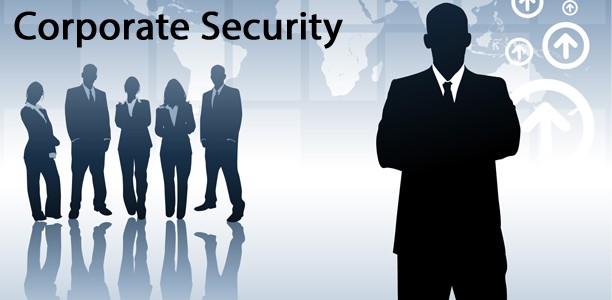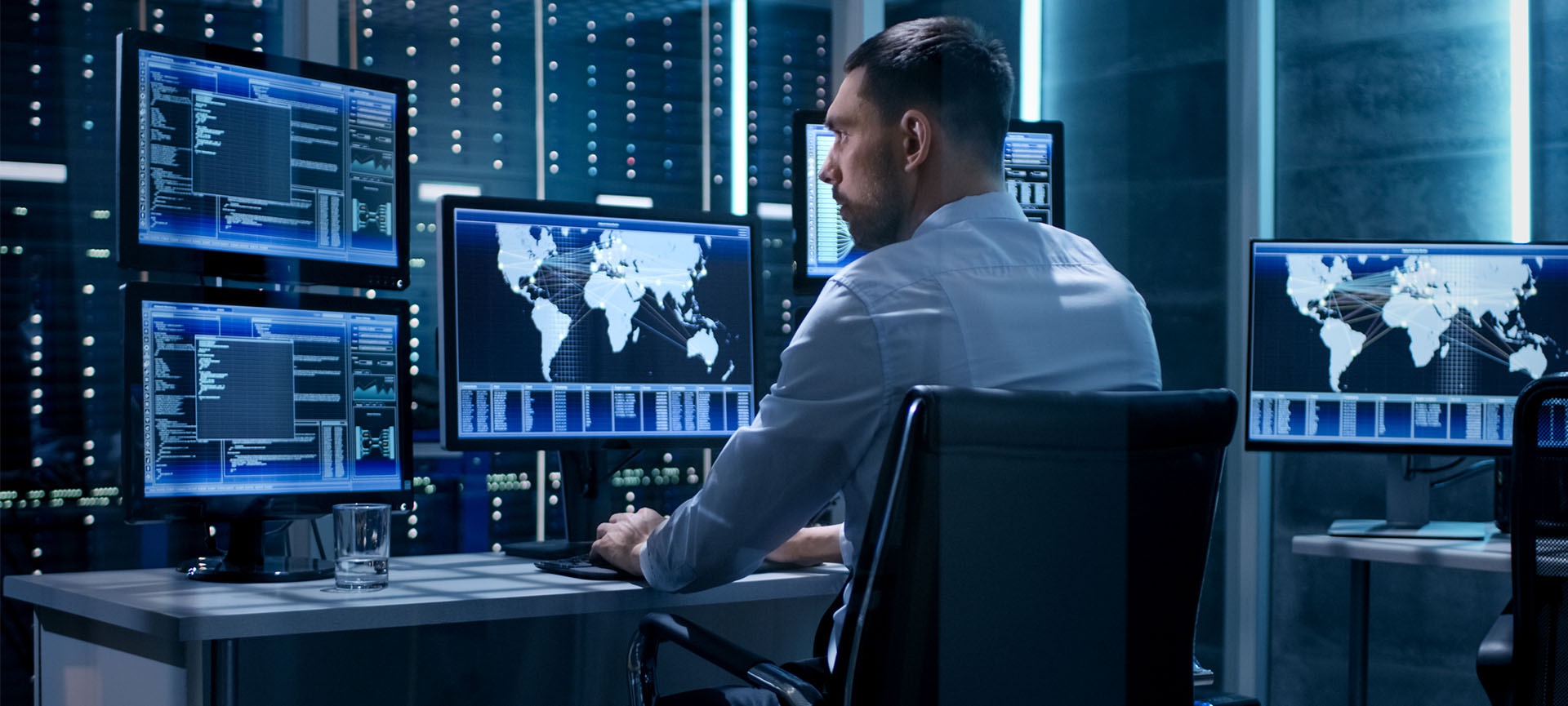A Plan for Corporate Security Excellence: Safeguarding Your Venture
A Plan for Corporate Security Excellence: Safeguarding Your Venture
Blog Article
From Cybersecurity to Physical Actions: Strengthening Corporate Protection in a Transforming World
In today's quickly advancing digital landscape, the relevance of business protection can not be overstated. As cyber dangers end up being prevalent and progressively advanced, companies need to go beyond typical cybersecurity procedures to guard their assets and procedures - corporate security. This is where the combination of physical safety steps ends up being critical. By integrating the strengths of both cybersecurity and physical protection, firms can create a detailed protection strategy that attends to the diverse series of dangers they face. In this discussion, we will explore the changing threat landscape, the need to integrate cybersecurity and physical safety and security, the application of multi-factor verification steps, the significance of staff member understanding and training, and the adjustment of security steps for remote labor forces. By analyzing these key areas, we will get important insights into exactly how companies can strengthen their corporate safety and security in an ever-changing globe.
Recognizing the Transforming Risk Landscape
The evolving nature of the modern-day world demands a thorough understanding of the transforming danger landscape for effective company safety and security. It is essential for organizations to remain informed and adjust their protection measures to address these evolving dangers.
One trick facet of understanding the transforming danger landscape is recognizing the different sorts of threats that organizations deal with. Cybercriminals are regularly creating new strategies to manipulate susceptabilities in computer systems and networks. These threats can vary from malware and ransomware strikes to phishing scams and social engineering strategies. In addition, physical hazards such as burglary, vandalism, and business reconnaissance remain common problems for companies.
Monitoring and assessing the risk landscape is essential in order to determine prospective risks and vulnerabilities. This involves remaining upgraded on the current cybersecurity fads, analyzing threat knowledge records, and conducting normal threat analyses. By comprehending the altering hazard landscape, organizations can proactively execute suitable safety measures to mitigate risks and protect their properties, track record, and stakeholders.
Integrating Cybersecurity and Physical Protection
Integrating cybersecurity and physical protection is critical for detailed company security in today's interconnected and electronic landscape. As companies significantly depend on innovation and interconnected systems, the boundaries in between physical and cyber dangers are becoming blurred. To successfully secure versus these threats, an all natural approach that integrates both cybersecurity and physical safety and security measures is essential.
Cybersecurity concentrates on securing digital properties, such as systems, data, and networks, from unauthorized gain access to, disturbance, and burglary. Physical safety, on the other hand, encompasses actions to secure physical assets, individuals, and centers from susceptabilities and dangers. By integrating these 2 domains, companies can address vulnerabilities and threats from both electronic and physical angles, consequently boosting their general safety position.
The integration of these two self-controls permits a more extensive understanding of safety and security threats and allows a unified action to cases. Physical access controls can be enhanced by incorporating them with cybersecurity protocols, such as two-factor authentication or biometric recognition. Cybersecurity measures can be complemented by physical safety and security steps, such as monitoring video cameras, alarm systems, and secure accessibility factors.

Applying Multi-Factor Verification Steps
As organizations progressively prioritize comprehensive security procedures, one effective method is the implementation of multi-factor verification measures. Multi-factor verification (MFA) is a safety and security approach that calls for customers to offer numerous types of identification to access a system or application. This technique adds an added layer of defense by combining something the user understands, such as a password, with something they have, like a fingerprint or a safety and security token.
By implementing MFA, organizations can dramatically boost their security stance - corporate security. Traditional password-based authentication has its restrictions, as passwords can be quickly jeopardized or neglected. MFA mitigates these dangers by including an added authentication variable, making it harder for unapproved people to gain accessibility to delicate information
There are several kinds of multi-factor authentication methods offered, including biometric verification, SMS-based confirmation codes, and hardware tokens. Organizations need to assess their specific requirements and pick the most appropriate MFA remedy for their requirements.
However, the implementation of MFA must be thoroughly prepared and performed. It is crucial to strike a balance in between protection and use to stop user frustration and resistance. Organizations ought to likewise consider prospective compatibility issues and provide appropriate training and support to make certain a smooth transition.
Enhancing Employee Awareness and Training
To enhance corporate protection, companies have to focus on improving employee understanding and training. In today's rapidly progressing danger landscape, workers play an important duty in safeguarding an organization's delicate details and assets. Lots of protection breaches take place due to human mistake or absence of understanding. Companies need to invest in detailed training programs to enlighten their employees regarding prospective risks and the ideal techniques for alleviating them.
Reliable worker understanding and training programs need to cover a variety of topics, including data defense, phishing attacks, social engineering, password health, and physical safety and security steps. you can try these out These programs should be customized to the details requirements and obligations of different worker roles within the organization. Normal training workshops, sessions, and simulations can help employees create the essential abilities and expertise to respond and determine to security threats properly.
Furthermore, companies should motivate a culture of protection awareness and offer continuous updates and suggestions to keep staff members notified regarding the latest hazards and mitigation methods. This can be done through interior communication networks, such as newsletters, intranet sites, and e-mail projects. By cultivating a security-conscious labor force, companies can considerably decrease the likelihood of safety and security incidents and safeguard their beneficial properties from unapproved gain access to or compromise.

Adapting Protection Actions for Remote Workforce
Adapting corporate security actions to suit a remote workforce is important in guaranteeing the defense of delicate information and possessions (corporate security). With the boosting pattern of remote work, organizations need to implement ideal security procedures to alleviate the threats connected with this brand-new method of working
One important aspect of adjusting protection procedures for remote job is establishing protected communication networks. Encrypted messaging platforms and virtual exclusive networks (VPNs) can help shield delicate info and avoid unauthorized gain access to. Furthermore, companies need to enforce the usage of solid passwords and multi-factor authentication to boost the safety of remote accessibility.
Another crucial consideration is the application of safe and secure remote access remedies. This entails offering workers with safe and secure accessibility to corporate resources and data via online desktop computer framework (VDI), remote desktop computer protocols (RDP), or cloud-based options. These technologies make certain that sensitive information stays secured while allowing employees to do their roles effectively.

Last but not least, thorough security awareness training is vital for remote employees. Educating sessions should cover finest practices for firmly accessing and taking care of sensitive info, identifying and reporting phishing attempts, and preserving the general cybersecurity hygiene.
Conclusion
In verdict, as the threat landscape remains to advance, it is essential for companies to enhance their security measures both in the cyber and physical domains. Incorporating cybersecurity and physical safety and security, carrying out multi-factor verification actions, and enhancing worker understanding and training are crucial steps in look at these guys the direction of accomplishing durable business protection. Furthermore, adapting security actions to suit remote workforces is important in today's transforming world. By implementing these actions, organizations can minimize threats and shield their important possessions from possible dangers.
In this discussion, we will certainly discover the changing hazard landscape, the need to incorporate cybersecurity and physical protection, the implementation of multi-factor verification measures, the significance of employee awareness and training, and the adaptation of safety and security actions for remote labor forces. Cybersecurity procedures can be enhanced by physical safety procedures, such as security video cameras, alarms, and secure access points.
As companies progressively prioritize thorough safety measures, one reliable method is the implementation of multi-factor verification steps.In final thought, as the risk landscape proceeds to develop, it is crucial for companies to enhance their security page determines both in the cyber and physical domains. Incorporating cybersecurity and physical protection, implementing multi-factor authentication procedures, and improving staff member awareness and training are necessary actions towards attaining durable corporate safety and security.
Report this page